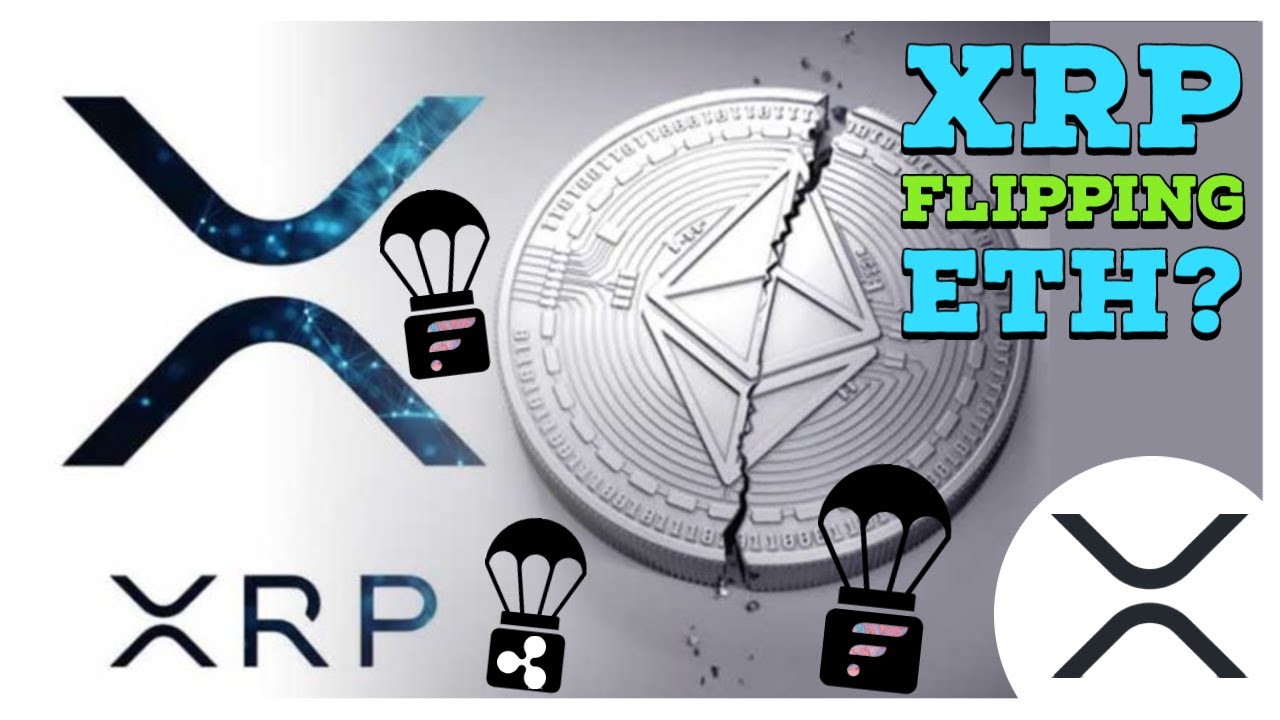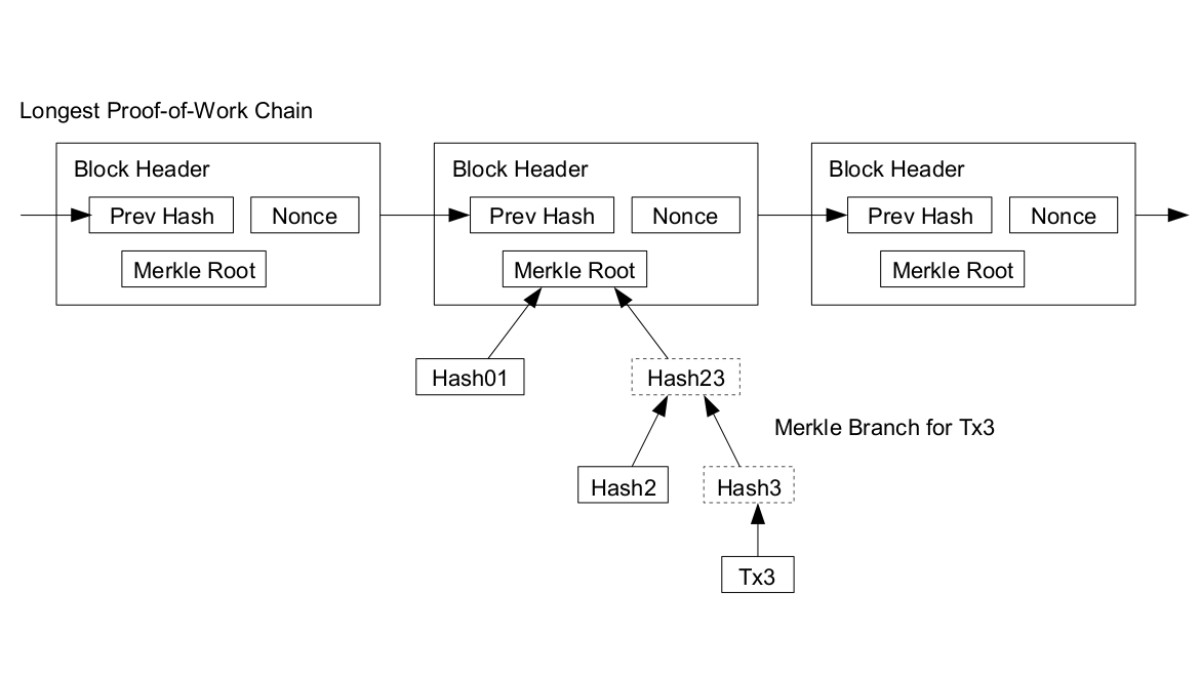Introduction
Welcome to the world of Ethereum, a decentralized blockchain platform that has revolutionized the way we think about digital transactions. With its advanced smart contract capabilities, Ethereum has become one of the most widely used platforms for building decentralized applications (dApps) and executing secure and transparent transactions. As the popularity of Ethereum continues to grow, so does the need to understand and optimize its transaction processing capabilities.
One of the key metrics used to measure the efficiency and scalability of a blockchain network is Transactions Per Second (TPS). TPS refers to the number of confirmed transactions that a blockchain can process within a single second. The higher the TPS, the more transactions a blockchain can handle, making it more efficient and capable of accommodating a larger user base.
However, despite Ethereum’s numerous strengths, it faces some limitations when it comes to TPS. As Ethereum operates on a proof-of-work consensus mechanism, the network is constrained by the mining process and the time it takes to validate each transaction. This results in a TPS rate that is significantly lower compared to traditional payment solutions such as Visa or Mastercard, which can handle thousands of transactions per second.
In this article, we will delve deeper into the factors that affect TPS in Ethereum and explore the potential solutions that can address these limitations. We will also discuss the upcoming Ethereum 2.0 upgrade, which aims to significantly increase the network’s TPS by implementing a new consensus mechanism and other enhancements. Additionally, we will explore how layer-2 solutions can further improve TPS and provide real-world examples of TPS in Ethereum.
So, if you’re ready to dive into the fascinating world of Ethereum and unlock the secrets of TPS optimization, let’s get started!
Understanding Transactions Per Second (TPS)
Transactions Per Second (TPS) is a crucial metric that measures the speed and efficiency of a blockchain network in terms of processing transactions. It provides insights into the network’s capacity to handle a high volume of transactions within a given time frame, usually measured in seconds.
In the context of Ethereum, TPS refers to the number of confirmed transactions that the network can process in one second. Each confirmed transaction represents the execution and verification of a smart contract or transfer of cryptocurrency on the Ethereum network.
However, it’s important to note that TPS can vary depending on the specific use case and network conditions. The TPS of Ethereum is affected by various factors, including the underlying consensus mechanism, network congestion, and the complexity of smart contracts being executed.
Ethereum’s current TPS is limited by its proof-of-work (PoW) consensus mechanism. PoW involves the process of mining, where computational efforts are required to validate transactions and secure the network. This mining process significantly affects the TPS, as each block can only accommodate a certain number of transactions, and the time required to mine a block can vary depending on computational power.
Moreover, Ethereum’s TPS is also influenced by network congestion. During peak usage periods or when multiple smart contracts are being executed simultaneously, the network can become congested, leading to slower transaction processing times and potentially higher fees.
Another factor that affects TPS in Ethereum is the complexity of smart contracts being executed. Smart contracts are autonomous pieces of code that execute predefined actions on the Ethereum network. When executing complex smart contracts with multiple conditions and functions, more computational power is required, which can slow down the TPS.
It’s essential to understand the limitations and factors affecting TPS in Ethereum to optimize the network’s performance and explore potential solutions. In the next sections, we will delve deeper into these limitations and discuss how Ethereum 2.0 and layer-2 solutions aim to address them to achieve higher TPS.
TPS Limitations in Ethereum
While Ethereum remains a prominent blockchain platform, it faces certain limitations when it comes to Transactions Per Second (TPS). These limitations are primarily attributed to the network’s current consensus mechanism and infrastructure. Understanding these limitations is crucial for identifying areas of improvement and exploring potential solutions.
One of the main limitations of Ethereum’s TPS is its reliance on the proof-of-work (PoW) consensus mechanism. PoW requires miners to compete against each other to solve complex mathematical puzzles to validate transactions and create new blocks. This process consumes significant computational resources and time, resulting in a limited number of transactions that can be processed within a given time frame.
Currently, Ethereum has a TPS rate of around 15 transactions per second, which is considerably lower compared to traditional payment networks like Visa or Mastercard that can handle thousands of transactions per second. The PoW consensus mechanism acts as a bottleneck, preventing Ethereum from achieving higher TPS.
Additionally, network congestion can further limit TPS in Ethereum. During times of high demand or when multiple smart contracts are being executed simultaneously, the network can become congested. This congestion leads to delays in transaction confirmation and higher gas fees, negatively impacting the overall TPS rate.
Furthermore, the scalability limitations of the Ethereum blockchain also contribute to the TPS constraints. As more users and applications adopt Ethereum, the network is burdened with increased data storage and processing requirements. The current architecture of Ethereum struggles to efficiently handle this growing demand, resulting in scalability issues and lower TPS.
It’s important to note that these limitations are not inherent flaws of Ethereum, but rather challenges that need to be addressed for the network to achieve higher TPS. The Ethereum community has recognized these limitations and is actively working on solutions to overcome them.
In the next sections, we will delve into the factors that affect TPS in Ethereum and explore the potential solutions, such as Ethereum 2.0 and layer-2 solutions, that aim to address these limitations and significantly increase the network’s TPS.
Factors Affecting TPS in Ethereum
Several factors influence the Transactions Per Second (TPS) rate in Ethereum. Understanding these factors is crucial for optimizing the network’s performance and exploring solutions to improve TPS. Let’s explore some of the key factors affecting TPS in Ethereum:
1. Consensus Mechanism: Ethereum’s current TPS limitations are primarily due to its proof-of-work (PoW) consensus mechanism. PoW requires miners to solve complex mathematical puzzles, which consumes time and computational resources. This restricts the number of transactions that can be processed within a given time frame and limits the TPS rate.
2. Network Congestion: During times of high demand or when multiple smart contracts are executed simultaneously, the Ethereum network can become congested. Congestion leads to delays in transaction confirmation and increased gas fees, both of which impact the TPS rate.
3. Smart Contract Complexity: The complexity of smart contracts being executed on the Ethereum network can significantly affect the TPS rate. Complex smart contracts that involve multiple conditionals and functions require more computational power, resulting in slower transaction processing and lower TPS.
4. Scalability Challenges: The scalability limitations of the Ethereum blockchain also impact TPS. As more users and applications join the network, the demand for data storage and processing increases. The current architecture of Ethereum faces challenges in efficiently handling this growing demand, thereby affecting TPS.
5. Gas Limit: Ethereum utilizes gas to allocate computational resources and prevent network abuse. Each transaction requires a specific amount of gas, and there is a gas limit per block. When the demand for transactions exceeds the gas limit, some transactions may be delayed or dropped, resulting in lower TPS.
6. Block Size: Ethereum’s block size limit also influences TPS. Each block can only accommodate a certain number of transactions, and larger block sizes can potentially increase the TPS rate. However, increasing the block size brings its own set of challenges, such as longer confirmation times and increased resource requirements.
7. Network Latency: The physical distance between nodes and network latency can impact TPS. Higher network latency can result in delays in transaction propagation and verification, lowering the TPS rate.
Addressing these factors and finding solutions to improve TPS in Ethereum is vital for enhancing the network’s scalability and usability. In the next sections, we will explore Ethereum 2.0, a major upgrade to the Ethereum network, and layer-2 solutions that aim to address these limitations and significantly increase TPS.
Ethereum 2.0: The Solution for Higher TPS
Ethereum 2.0, also known as ETH2 or Serenity, is a major upgrade to the Ethereum network that aims to address the current limitations in Transactions Per Second (TPS) and improve scalability. This upgrade introduces several key features that pave the way for higher TPS rates and a more efficient and sustainable blockchain platform.
One of the most significant changes in Ethereum 2.0 is the shift from the current proof-of-work (PoW) consensus mechanism to a proof-of-stake (PoS) mechanism. PoS eliminates the need for miners to solve complex puzzles, thereby improving the speed and efficiency of transaction validation. This transition to PoS allows Ethereum to process a higher number of transactions in a given time frame, ultimately increasing the TPS rate.
Ethereum 2.0 also introduces shard chains, which divide the network into multiple smaller chains called shards. Each shard chain operates independently and can process its transactions and smart contracts. This shard chain architecture enables parallel processing, significantly increasing the network’s overall capacity to handle more transactions simultaneously and improving TPS.
Another key aspect of Ethereum 2.0 is the implementation of eWASM, a new virtual machine that replaces the existing Ethereum Virtual Machine (EVM). eWASM offers faster and more efficient execution of smart contracts, resulting in improved TPS. This upgrade ensures that the network can handle more complex smart contracts without compromising on transaction processing speed.
Furthermore, Ethereum 2.0 introduces additional improvements such as improved network scalability through the use of stateless clients, streamlined and more cost-effective transaction fees, and enhanced security measures. These enhancements work together to improve TPS and overall network performance.
It’s important to note that Ethereum 2.0 is being rolled out in multiple phases, with Phase 0 (the launch of the Beacon Chain) already completed. The subsequent phases will introduce shard chains and gradually transition the Ethereum network to the new PoS consensus mechanism.
As Ethereum 2.0 continues to be developed and implemented, it holds promising potential for significantly increasing the network’s TPS and scalability. These advancements will enable Ethereum to fulfill its vision of becoming a robust and efficient foundation for decentralized applications and digital transactions.
In the next section, we will explore layer-2 solutions, which complement Ethereum 2.0 and further enhance TPS in the Ethereum network.
Improving TPS through Layer-2 Solutions
Layer-2 solutions offer a promising approach to improve Transactions Per Second (TPS) in the Ethereum network. These solutions aim to scale the network’s capacity by building additional layers on top of the Ethereum blockchain while retaining its security and decentralization.
One of the most popular layer-2 solutions is called the “Rollup” technique. Rollups work by aggregating multiple transactions into a single transaction that is then submitted to the Ethereum blockchain. This reduces the number of on-chain transactions and significantly increases TPS. Rollups leverage smart contracts to handle transaction validation and dispute resolution, ensuring the security and integrity of the off-chain transactions.
Another layer-2 solution is called “State Channels.” State Channels allow users to conduct off-chain transactions while still benefiting from the Ethereum network’s security. By opening a state channel, participants can engage in multiple transactions without each transaction being broadcasted to the Ethereum blockchain. This substantially reduces the burden on the main Ethereum network, resulting in higher TPS.
Plasma is another layer-2 solution that improves TPS by creating side chains connected to the Ethereum blockchain. These side chains, known as “child chains,” handle a high volume of transactions, minimizing the load on the main Ethereum network. The child chains periodically submit aggregated data to the Ethereum main chain, ensuring the security and integrity of the transactions.
ZK-Rollups (Zero-Knowledge Rollups) offer another approach to improve TPS by leveraging zero-knowledge proofs. ZK-Rollups bundle multiple transactions and create a succinct proof that represents the validity of those transactions. This proof is then verified on the Ethereum blockchain, reducing the computational requirements and significantly increasing TPS while maintaining the security and privacy of the transactions.
These layer-2 solutions provide a scalable and efficient way to process a higher number of transactions off-chain or on secondary chains while preserving the security and trust of the Ethereum network. By offloading a significant portion of the transactional load to these layer-2 solutions, TPS can be dramatically increased, offering a more seamless experience for users and applications.
It’s important to note that while layer-2 solutions significantly improve TPS, they do introduce some trade-offs in terms of liquidity and the time required to settle the transactions on the Ethereum main chain. Nevertheless, layer-2 solutions complement Ethereum 2.0’s efforts to boost TPS and scalability, providing a comprehensive approach to accommodate the growing demands of the Ethereum ecosystem.
In the next section, we will explore real-world examples of TPS in Ethereum and highlight the achievements and challenges in handling high transaction volumes.
Real-World TPS Examples in Ethereum
Ethereum has been widely used as a platform for various decentralized applications (dApps) and has experienced real-world scenarios that demonstrate its Transactions Per Second (TPS) capabilities. While Ethereum’s TPS is currently lower compared to traditional centralized payment systems, several projects and events have showcased its potential to handle high transaction volumes. Let’s explore some real-world TPS examples in Ethereum:
1. CryptoKitties: In late 2017, the release of CryptoKitties, a popular blockchain-based game, caused a significant surge in the number of transactions on the Ethereum network. The game allows users to trade and breed virtual cats, resulting in a large number of transactions being processed. At its peak, CryptoKitties accounted for approximately 15% of the total Ethereum network traffic, demonstrating the ability of the network to handle a considerable transaction load.
2. Decentralized Finance (DeFi): DeFi applications have gained significant traction on the Ethereum network, offering financial services such as lending, borrowing, and yield farming. Platforms like Compound, Aave, and MakerDAO have processed thousands of transactions daily, showcasing Ethereum’s capacity to handle a high volume of DeFi-related transactions. However, the increasing popularity of DeFi has also highlighted scalability challenges, with network congestion and high gas fees affecting TPS.
3. Initial Coin Offerings (ICOs): During the ICO boom in 2017 and early 2018, numerous projects launched their initial token offerings on the Ethereum blockchain. These ICOs attracted a large number of participants, resulting in a surge in transaction volumes. Notably, projects like Status and Filecoin raised millions of dollars through their ICOs, demonstrating Ethereum’s capability to handle high transaction volumes, albeit with occasional network congestion and increased gas fees.
4. High-Profile Events: Ethereum has successfully handled high transaction volumes during significant events. For instance, the decentralized exchange Uniswap experienced a surge in transactions during the decentralized finance (DeFi) craze in 2020. Likewise, during the “DAO hack” incident in 2016, where a vulnerability in a decentralized autonomous organization (DAO) smart contract was exploited, Ethereum processed a massive number of transactions as users rushed to reclaim their funds.
While these real-world examples highlight Ethereum’s ability to process high transaction volumes, it’s important to acknowledge the scalability challenges that arise during periods of network congestion. As Ethereum continues to evolve with upgrades like Ethereum 2.0 and the implementation of layer-2 solutions, improvements in TPS are anticipated, opening up opportunities for even greater scalability and wider adoption of Ethereum-based applications.
In the next section, we will conclude our exploration of TPS in Ethereum and summarize the key points discussed throughout the article.
Conclusion
In conclusion, Transactions Per Second (TPS) is a critical metric that measures the speed and efficiency of transaction processing in the Ethereum network. Ethereum’s current TPS rate is limited by factors such as its proof-of-work (PoW) consensus mechanism, network congestion, and smart contract complexity. However, Ethereum is actively working on addressing these limitations and improving TPS through innovative solutions.
Ethereum 2.0, with its transition to a proof-of-stake (PoS) consensus mechanism, shard chains, and improvements in execution efficiency, holds significant promise for achieving higher TPS rates. By reducing the computational overhead of transaction validation and enabling parallel processing, Ethereum 2.0 can significantly increase TPS and enhance scalability.
Layer-2 solutions, such as Rollups, State Channels, Plasma, and ZK-Rollups, further complement Ethereum’s efforts to improve TPS. These solutions offload a significant portion of transactional load to off-chain or secondary chains, resulting in increased TPS while maintaining security and decentralization.
Real-world examples, like CryptoKitties, DeFi applications, and ICOs, have showcased Ethereum’s ability to handle high transaction volumes. While occasional network congestion and gas fees can impact TPS, these examples highlight the resilience and potential of the Ethereum network.
As Ethereum continues to evolve and implement upgrades, it is expected to overcome its scalability challenges and achieve higher TPS rates. The combination of Ethereum 2.0 and layer-2 solutions represents a comprehensive approach to enhance TPS, scalability, and usability, making Ethereum even more attractive for decentralized applications and digital transactions.
In summary, Ethereum’s TPS capabilities are evolving, driven by advancements in consensus mechanisms, scalability solutions, and innovative layer-2 technologies. These developments pave the way for a more efficient and scalable Ethereum network, enabling it to handle higher transaction volumes and drive widespread adoption in various industries.

























